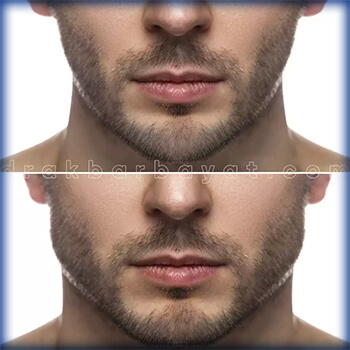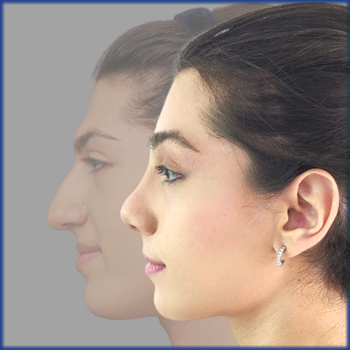
For these two reasons, Iranian people seek rhinoplastic help to remove their nasal defects. But do they share the same taste with western people when it comes to nasal beauty?
Differences between Iran and European countries in terms of anatomical nose shape
Most people in European countries are white, with skinny nasal tissues. There is a thin layer of subcutaneous tissue on the nasal bones, and therefore the width of the nose is largely determined by the shape of the nose and cartilages. Iranian people have thicker subcutaneous nasal tissues and skin thickness has greater impact on the width of their nose.
Roman nose is less prevalent among European people while this is a common feature of Aryan race. Long nose bridges lead to bents and deviations. It should be noted that a study conducted by me and my colleagues in 2008, published in an American otolaryngology journal, revealed that Iranian people need septoplasty for correcting deviated septum at younger ages compared to people in western countries.
It should also be noted that European people live in a relatively humid weather, and thus they have less difficulties in terms of nasal congestion and dryness (people in Iran can feel that they breathe more easily in northern cities of Iran). This leads to smaller movements of muscles involved in moving nasal parts. Drier weather in Iran leads to more nasal congestion and larger movements of muscles. Nasal muscles can play a significant role in growth of the nose (For more information on this click here ).
Different tastes of Iranian and western people in choosing favorite nose shape
- People in western countries prefer natural nose shape and avoid any sign that reveals a history of rhinoplasty. This is why they do not want much changes in the shape of their nose (figure below)
As seen in this figure, in addition to removal of nasal congestion, this English teenager wants to have an ideal nose by removing a 2-mm bent on her nose and creating a slightly turned up tip.
In contrast, many Iranians want major changes and prefer surgical results to be prominently observable on their noses. Therefore, in some cases, patients wants changes that lead to nasal congestions (figure below).
-
-
Although nasal bent and congestion has been removed in the previous surgery, this Iranian teenager complains about the natural shape of her nose. She wants a smaller arched nose with a more turned up tip to have prominent result. As seen in the figure, she asks for a 5.4-mm change in her bent-less nose.
- Iranian people prefer upturned nose tips and therefore the nasolabial angle will be greater than the reference value in medical books. This results in visual illusion and shorter, smaller nose. Despite this demand by many Iranian people, given the smaller average height of Iranians compared to foreign people, a 5 to 10 degree increase in the nasolabial angle is not much desirable. Many people even ask for more changes (figure below). (for more information on nasolabial angle click here ).
-
-
-
Having undergone surgery in another surgical center, this Iranian teenager asked for a more prominent jaw angle. Although the large nasolabial angle resulted in prominent nostrils in frontal view, she was totally satisfied with the shape of her nose.
- Many Iranian people prefer curved noses with concave slope. Many people think flat noses with no curve are the only form of natural nose while this is in fact not true. A natural nose may have different forms. In men, a natural nose may have a flat or slightly curved bridge while a flat dorsum with a desirable curve can give women’s nose a natural beautiful look. This is why some surgeons create sharply concave noses for their patients without taking into account beauty standards and the patient’s needs. This may lead to dissatisfaction and undesirable shape of the nose (figure below).
-
-
-
By creating an extreme curve in the patient’s nose, the surgeon has tried to give the nose a smaller look. But this led to the patient’s complaints about her wide nose in frontal and the unwanted curve in profile view.
- Iranian people prefer thin, slim noses. For this reason, some surgeons concentrate just on creating a thin nose, leading to difficulties in breathing (figure below).
-
Although satisfied with profile view of her nose, this patient complains about extremely slim nose and its disproportion to other parts in frontal view. The surgeon has tried to create an extremely thin nose, and this has led to disproportionally thinner lower parts (lower arrows) compared to the upper parts of the nose (upper arrows). This may also increase the risk of nasal congestion.


